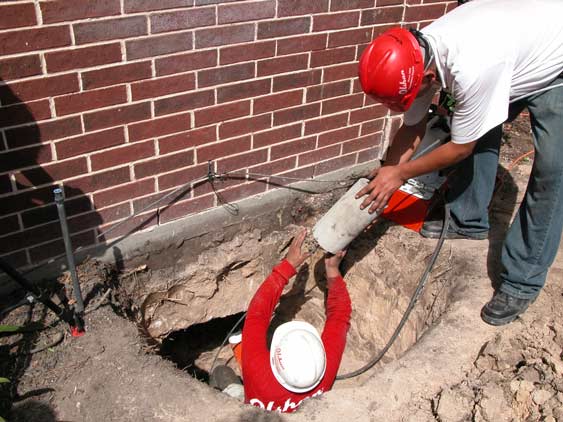Easy Ways Instructions: Foundation Repair Topeka KS

It’s no secret that the soil in Kansas is expansive. And when the expansive soil gets wet, it can put a lot of pressure on your home’s foundation. If you live in Topeka, KS, you know this all too well. That’s why we’ve put together this easy way guide to foundation repair in Topeka, KS.
Signs You Need Foundation Repair in Topeka, KS
There are a few telltale signs that you need foundation repair Topeka KS. If you see any of the following, it’s time to call a foundation specialist:
- Cracks in Your Foundation: If you see cracks—vertical, horizontal, or stair-stepped—in your foundation, it’s time to call a professional. These cracks are caused by the expansive soil putting too much pressure on your foundation.
- Doors and Windows That Don’t Open and Close Properly: If your doors and windows are sticking or won’t open and close properly, it could be a sign that your foundation is settling and putting pressure on your doors and windows.
- Gaps Around Your Doors and Windows: If you see gaps around your doors or windows—even if they open and close properly—it’s another sign that your foundation is settling.
- Water in Your Basement or Crawlspace: If you have water in your basement or crawlspace, it could be a sign of a serious problem with your foundation. Waterproofing your basement or crawlspace is only a temporary fix—you need to address the underlying problem with your foundation.
Ways to Repair Your Foundation
The easiest way to repair your foundation is to hire a professional. However, there are a few things that you can do on your own to help improve the condition of your foundation. This article will provide you with a few easy ways for concrete foundation repair or any other type of home repair.
1. Check the Drainage Around Your Home
One of the most common reasons for foundation problems is poor drainage. If water is not draining away from your home, it can seep into the soil and put pressure on your foundation. To check the drainage around your home, look for puddles of water or wet spots on the ground near your foundation. If you see any, then you need to take steps to improve the drainage. This may involve installing gutters or French drains.
2. Inspect Your Foundation for Cracks
Another common problem with foundations is cracking. Cracks can allow water to seep into your home, which can lead to serious damage. To inspect your foundation for cracks, start by looking at the mortar joints. These are the spaces between the bricks or blocks that make up your foundation. If you see any cracks wider than 1/8 of an inch, then you need to have them repaired as soon as possible.
3. Check the Grade Around Your Foundation
The ground around your foundation should slope away from your home at a rate of about 6 inches per foot. This will help ensure that water does not pool next to your foundation and cause problems. To check the grade around your home, use a level to see how much the ground slopes away from your foundation. You can also use a tape measure to measure the distance from your foundation to an object that is 6 feet away from your home (such as a tree). If the ground does not slope away from your home at a rate of 6 inches per foot, then you need to take steps to improve the grading. This may involve adding soil or installing drains.
3 Other Ways for You
- Piering: Piering is one of the most common methods of repairing foundations. It involves driving steel piers into the ground next to your foundation to support it and stop it from moving.
- Slabjacking: Slabjacking is a method of repairing sunken concrete slabs—like sidewalks, driveways, and patios—by injecting concrete beneath the slab to raise it back into place.
- Helical Piers: Helical piers are similar to steel piers but they are screwed into the ground instead of being driven in. Helical piers are often used for lighter structures like porches and decks
Last Say
These are just a few easy ways that you can repair your foundation. Remember, if you are not sure how to do something or if you think the problem is too big for you to handle, always call a professional for help. A professional will be able to assess the situation and give you advice on what needs to be done to fix the problem.